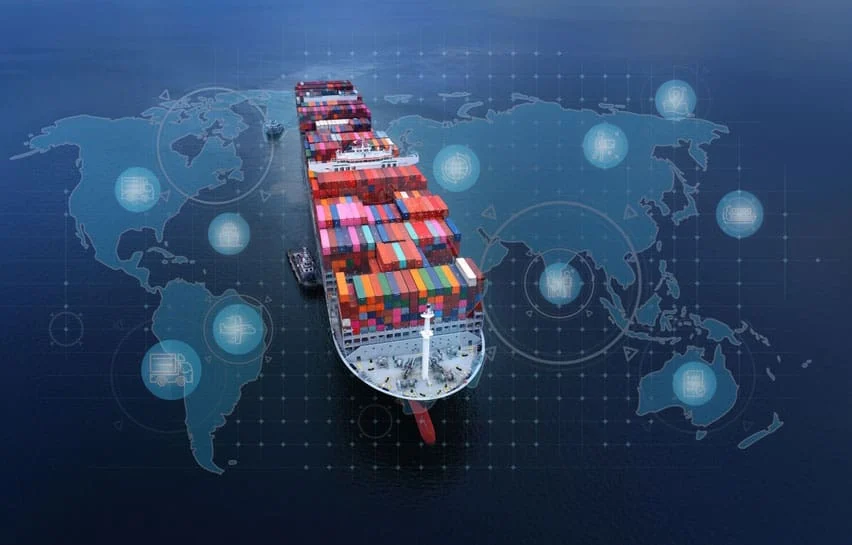By Dipak Kurmi
The 90-day suspension of tariffs by the United States under the likely-returning Trump administration marks more than a momentary diplomatic maneuver. It may well signify a pivotal chapter in the evolution of global trade—a moment where the world, standing at a technological and geopolitical inflection point, must decide between clinging to the archaic tools of economic coercion or boldly embracing a regenerative, intelligent future.
Historically, tariffs have been used as blunt instruments, akin to toll gates along the road of international commerce. Their reappearance in the 21st century, particularly under the pretext of protecting domestic manufacturing and rebalancing trade deficits, reflects not just economic anxiety but a deep-seated struggle to come to terms with a world transformed by globalisation. Trump’s reciprocal tariff action, although temporarily halted for most nations except China, underscores a mounting skepticism towards multilateral institutions like the World Trade Organization (WTO), which once stood as pillars of open, rules-based trade.
While Trump’s diagnosis—based on the lack of reciprocity in bilateral trade, disparate tariff rates, and the United States’ $1.23 trillion trade deficit—is rooted in observable asymmetries, the remedy of tariffs risks misinterpreting the underlying causes. The hollowing out of American manufacturing, from 28.4% of global output in 2001 to just 17.4% in 2023, and the loss of five million jobs from 1997 to 2024, are not simply due to unfair foreign practices. They are also the consequence of decades of unbridled globalisation, in which American multinationals offshored production in pursuit of profit, often at the cost of national capacity and security.
The globalisation project, orchestrated with the WTO at its helm, created a trading order where value chains became borderless. It enabled exponential growth in emerging economies, especially China, whose share in global merchandise exports soared from 0.8% in 1980 to 14% in 2023. Meanwhile, the U.S. share dwindled to 8.5%. China, by investing nearly 2.5% of GDP in research and development, building innovation networks, and initiating programs like Chunhui to reverse brain drain, managed to blur the once-clear divide between the Global North as innovator and the Global South as manufacturer. In contrast, India’s R&D spending slipped to 0.64% of GDP even as it became the largest provider of skilled labor to American firms. Had India emulated China’s strategy, the pressure on the U.S. might have been even more intense.
This new trade ecosystem—digital, decentralised, and demand-driven—requires more than patchwork tariffs or protectionist tantrums. Instead, it calls for a complete reimagination of the scaffolding of global exchange. The convergence of frontier technologies—Artificial General Intelligence (AGI), blockchain, green hydrogen, biotech, precision agriculture, and AI copilots—is disassembling trade barriers at a pace faster than policy can match. In this environment, the true debate is not about tariff or no tariff, but about designing a future-proof, ethics-aligned, digitally governed trade architecture.
Let us imagine a world unburdened by artificial trade impediments. Picture a trade regime with zero tariffs, unrestricted movement of ideas, talent, goods, and capital, and a unified digital medium of value exchange—where sustainability and inclusivity are embedded in the very fabric of commerce. The 90-day tariff reprieve is more than a de-escalation tactic; it is an invitation to negotiate the framework for this future.
Indian exporters must respond to this opportunity with clarity and coordination. Automotive components, pharmaceuticals, green tech, and IT services stand to benefit from deepening U.S. ties if they act quickly. Trade bodies must align export readiness strategies with diplomatic efforts to ensure this pause is not squandered. India, poised to be the world’s third-largest economy by 2030, must seize this moment to lead the drafting of a Global Ethical Trade Charter—one that places sustainability, equity, and digital governance at its core.
This vision is not without precedent. Warren Buffett’s allegory of Squanderville versus Thriftville offers an early warning against the unchecked consumption and trade imbalances that now haunt the U.S. economy. His proposed solution—Import Certificates—was a clever nudge towards trade equilibrium without direct confrontation. But the world has since evolved. Today, AGI-powered productivity and tokenised ownership models allow us to envision a system where micro-ownership of global production and planet-positive trade credits replace coercive balancing mechanisms. In this model, carbon, water, and biodiversity become integral metrics alongside GDP.
Past mistakes, such as the Smoot-Hawley Tariff Act of 1930, serve as grim reminders of the perils of economic isolationism. That misguided legislation deepened the Great Depression and triggered retaliatory spirals. Similarly, the US-China tariff battles of 2018–2020 disrupted supply chains and stoked inflation. In contrast, periods of coordinated trade diplomacy—like the 1985 Plaza Accord or the Uruguay Round—resulted in structural rebalancing and widespread innovation. The lesson is clear: negotiate not out of fear but with design, not to dominate but to optimise.
This temporary tariff pause is being read differently across the world. ASEAN nations view it as a chance to reinforce regional FTAs and deepen links with India and the EU. Europe is recalibrating its carbon border tax to align trade with sustainability. China sees it as both pressure and opportunity—to stimulate domestic demand, diversify partnerships, and de-risk dollar exposure. Each response reflects strategic recalibration rather than passive adjustment.
Forward-looking supply chains must take advantage of this calm to recalibrate. This is the moment to reroute operations to geographies like India, Africa, and ASEAN, where demographic dividends and governance reforms await. Companies must invest in automation, traceability, and AI-enhanced trade logistics. Digital twins of supply networks can simulate disruptions and enable proactive management. Borderless service ecosystems—augmented by AI copilots—should be built to facilitate regulatory compliance, real-time ESG reporting, and frictionless resolution of trade disputes.
And then, there is the question of money.
A true evolution of global trade requires a shift in the medium of exchange. The future is not another fiat hegemony, but a programmable, transparent, and equitable digital token—backed not by political power, but by sustainable production and global trust. Imagine a Global Exchange Token (GET): carbon-neutral, convertible across currencies, and allocated based on progress towards the Sustainable Development Goals. Such a system could disrupt dollar-dominant asymmetries, incentivise green growth, and decentralise economic power.
Ultimately, the world needs more than just a tariff timeout. It demands a policy reboot, a currency rethink, and a foundational redefinition of trade ethics. AGI is no longer a speculative future—it is knocking on the door of productivity. If we anchor our trade structures to the competitive instincts of the past, we risk squandering an era defined by abundance, innovation, and interdependence.
Let us seize this moment—not to resurrect mercantilist instincts, but to architect a new global commons. Let us replace weaponised trade with intelligent exchange, scarcity economics with sustainable abundance. If done right, this 90-day interlude will be remembered not as a fleeting pause, but as a moment when the world chose thriving over throttling, collaboration over coercion, and regeneration over rivalry.
(the writer can be reached at dipakkurmiglpltd@gmail.com)




